Pizza Pan 101: How to Choose the Right Pizza Pan
Ever wondered why your pizza crust isn’t as crispy or soft as you want? Maybe it’s the pan you’re using. Pizza, a universally loved dish, owes much of its flavor and texture to the pan it’s baked in. Whether you prefer thin crust or deep-dish pizza, the pan you choose can make a significant difference. The right pizza pan can turn a simple dough into a culinary joy.
Picking the right pizza pan can make your pizza taste way better. It affects the thickness, crispiness, and overall flavor of the crust. Whether you’re a business owner searching for the best pans to supply the retailers, or just an avid home cook, understanding your pan options is vital.
“It’s just a pan, how complicated can it be?” you may be thinking. But don’t worry, there’s still more to learn. Continue reading to learn about the complexity of pizza pans and how to choose the best one for your needs.
What are the Types of Pizza pans?
When it comes to baking pizza, having the appropriate pan can make the difference. There are different types of pizza pans to choose from, each with their own advantages.
- Metal Pizza Pans – These classic round metal pizza pans are the most common type you’ll find. They spread heat evenly, resulting in a crisp crust. Look for pans made from aluminized steel or even cast iron for superior heat retention.
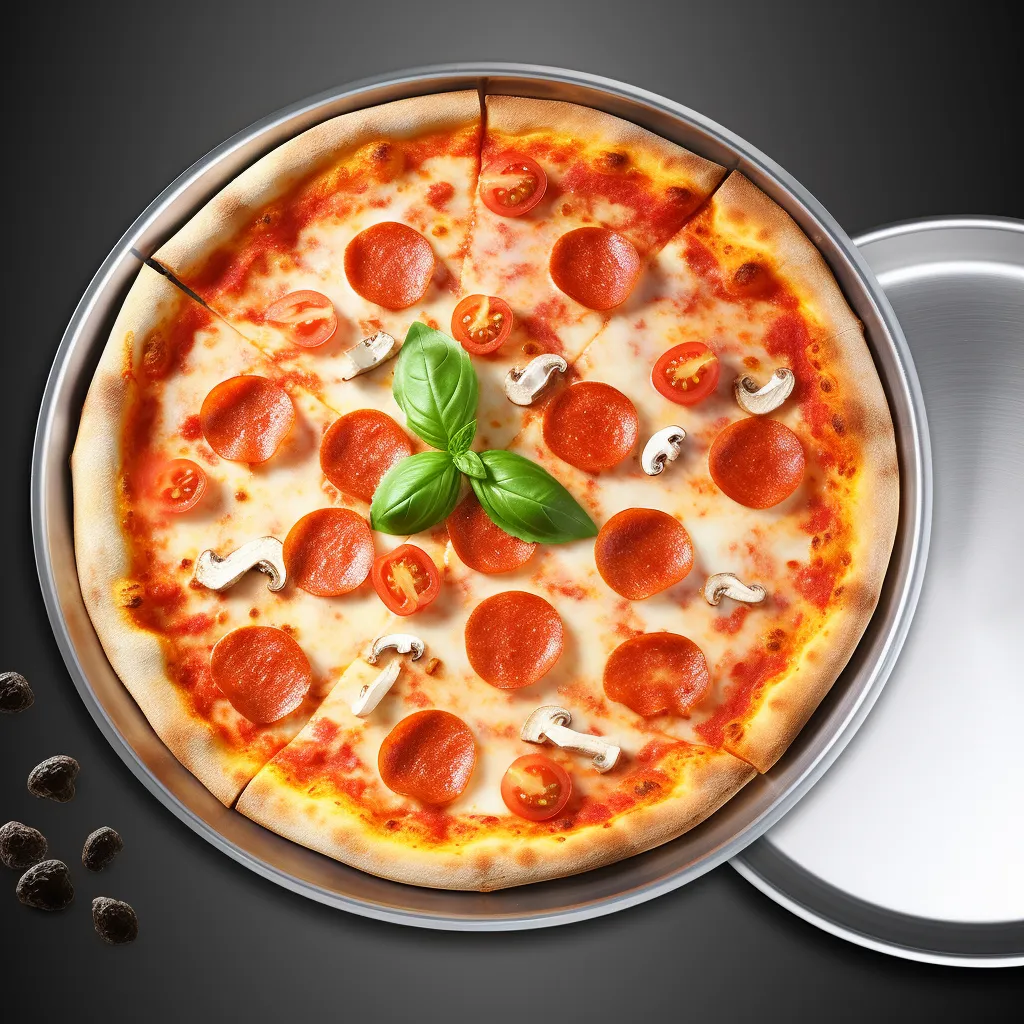
- Pizza Screens – Pizza screens are round metal disks with small holes throughout, which is also called perforated pizza pan. For an extra crispy bottom, the holes allow air to circulate beneath the crust. Pizza screens are an excellent, low-cost choice.

- Pizza Stones – Pizza stones are made from ceramic or stone and mimic the effects of cooking pizza in a brick oven. They absorb moisture, resulting in a crispy crust. Place your pizza directly on a preheated stone.

- Deep Dish Pizza Pans – For Chicago-style deep dish pizzas, you’ll need a deep, rounded pan approximately 2 inches deep. These thick, heavy pans are usually made of cast iron or aluminized steel. The steep walls help create that thick, dense crust.
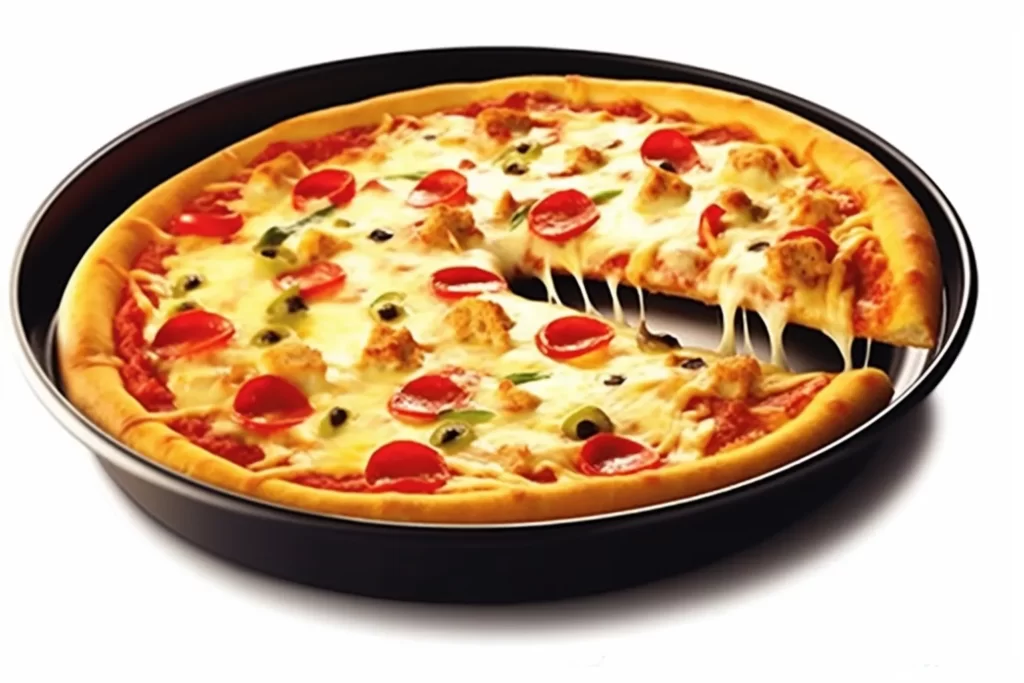
- Pizza Steels – Pizza steels are a newer alternative to pizza stones, made from thick slabs of stainless steel. The heavy steel absorbs moisture and gets extremely hot in the oven, cooking the pizza crust evenly for a crispy, charred finish. Pizza steels heat and cool faster than stones, making them ideal for cooking many pizzas.

The type of pizza pan you use can really affect the texture and style of your pizza crust. Consider what styles of pizza you enjoy making most at home and choose pans accordingly for the very best results.
What Factors Should You Consider When Buying a Pizza Pan?
The pan you choose can make all the difference when baking pizza at home. When choosing the right pizza pan, keep these important considerations in mind:
Material: Pizza pans are made of a variety of materials, including metal, ceramic, stone, and steel. Metal pans heat quickly and evenly. Ceramic and stone retain heat well but take longer to warm up. Steel offers a nice, crisp crust. Choose materials suited to your oven and preferences.
Weight – Heavier pans made from materials like cast iron or thick stone absorb moisture better for a crisper crust. Lighter metal pans are easier to handle like aluminum pizza pan. Go with a weight that’s comfortable for you.
Shape – Round, square, or rectangular pans can all work well. Round pans are best for smaller pizzas while rectangular sheet pans allow you to make long pizzas for cutting into multiple slices.
Wall Height – Deep dish pizza pans should have taller sides (at least 1-2 inches high) to hold in the dough layers, while traditional thin crust pizzas only need a shallow lip.
Size – Pick pans sized for the quantity of pizza you regularly make. Individual 6-10 inch rounds are good for personal pies. Bigger 14+ inch pans can handle family-sized or commercial pizzas.
Non-Stick Coating – Some metal pizza pans have a non-stick coating to prevent sticking and simplify cleanup. This isn’t essential but can be handy if you don’t like scrubbing burnt crust residue.
Price – Inexpensive metal pizza pans often work just fine. Higher priced ceramic or stone pans will retain heat better. Go for quality construction and durability.
Keep these key factors in mind as you shop for the ideal pizza pans to craft great homemade pizzas that are crispy, flavorful, and fun to make.
How Does the Pan’s Material Affect the Pizza’s Taste?
Metal Pizza Pans
Metal pans like aluminum and steel heat up quickly and evenly, producing a nicely browned crust, but they don’t retain heat as well. This can result in a less crisp bottom crust.
Aluminum Pizza Pan
Aluminum, known for its excellent heat conduction, is the popular material of choice, promising durability and consistent results. Those with perforations also play a pivotal role in reducing cooking time, ensuring that every bite of the pizza is a perfect blend of taste and texture.
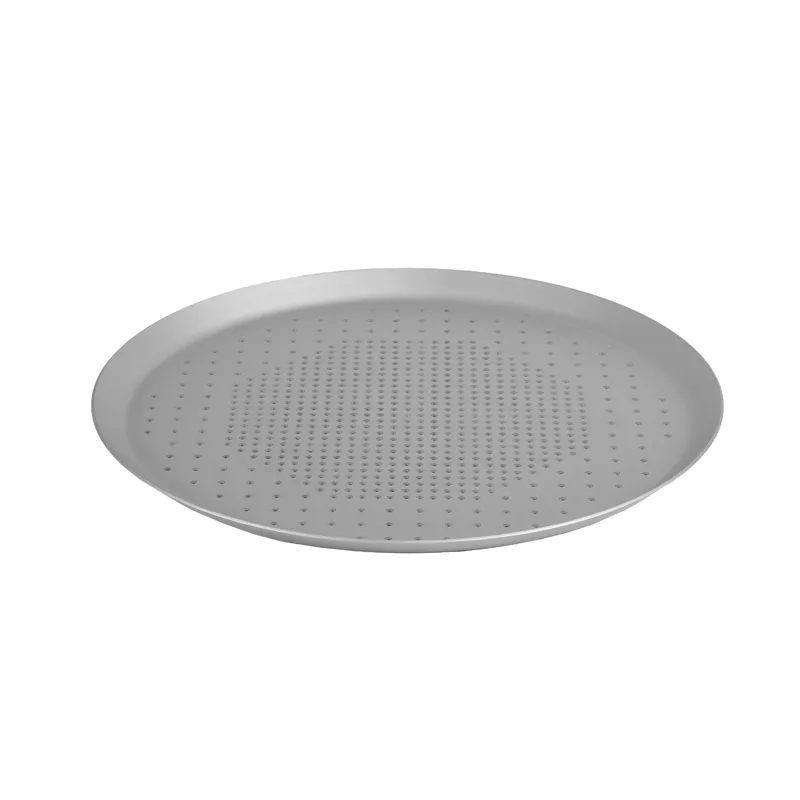
Pros:
- Even heating
- Good browning
- Inexpensive
- Lightweight and durable
Cons:
- Less crisp crust
- Can warp
- Untreated aluminum can react with acidic foods
Regarding the surface treatment of aluminum pizza pans, there are mainly two kinds of surface treatment. One is anodized aluminum pizza pans, which undergo an electrochemical process that hardens the surface. This results in a non-reactive and more scratch-resistant finish. The other one is anodized hard pizza pans, which usually have a thicker oxide layer, making them even more durable and less prone to warping.
Regarding the designs of aluminum pizza pans, there are two designs with holes and without holes. Perforated Pizza Pans come with multiple holes or slits, which allow air to circulate under the crust. This design ensures a crispier crust, as moisture is not trapped underneath the pizza. On the other hand, Non-perforated aluminum pans don’t have the perforations so there is less airflow but more direct pan contact with the crust and retain moisture, resulting in a softer, chewier crust.
Carbon Steel Pizza Pan


Carbon Steel Pizza Pans have increasingly become a favorite among both professional chefs and home cooks due to their heat retention and distribution properties. Comparable to cast iron, carbon steel heats up quickly but is generally lighter in weight, making it easier to handle.
In terms of surface treatment, seasoning and non-stick coatings are the two main surface treatments used on carbon steel pans.
Traditional carbon steel pans often undergo seasoning, a process where the pan is coated with a thin layer of oil and then heated to create a protective layer, which not only guards against rust but also offers a naturally non-stick surface. This procedure not only prevents rusting but also creates a natural non-stick surface that improves with continuous use and proper care.
In the modern market, some carbon steel pans also come with factory-applied non-stick coatings to offer immediate and enhanced non-stick capabilities. These coatings can be made of materials like PTFE or ceramic.
| Pros | Cons |
|---|---|
| Excellent heat retention and distribution | Requires maintenance, especially if seasoned |
| Develops a natural non-stick surface with seasoning | Potential to rust if not properly cared for |
| Lighter in weight compared to cast iron | Reacts with acidic foods if not properly seasoned |
| Can last a long time with proper care | Non-stick coating (if applied) might wear over time |
Regardless of the surface treatment, carbon steel pans are a wise investment for individuals who value their special mix of weight, thermal properties, and adaptability. To enhance their longevity and function, proper care is crucial.
Cast Iron Pizza Pans
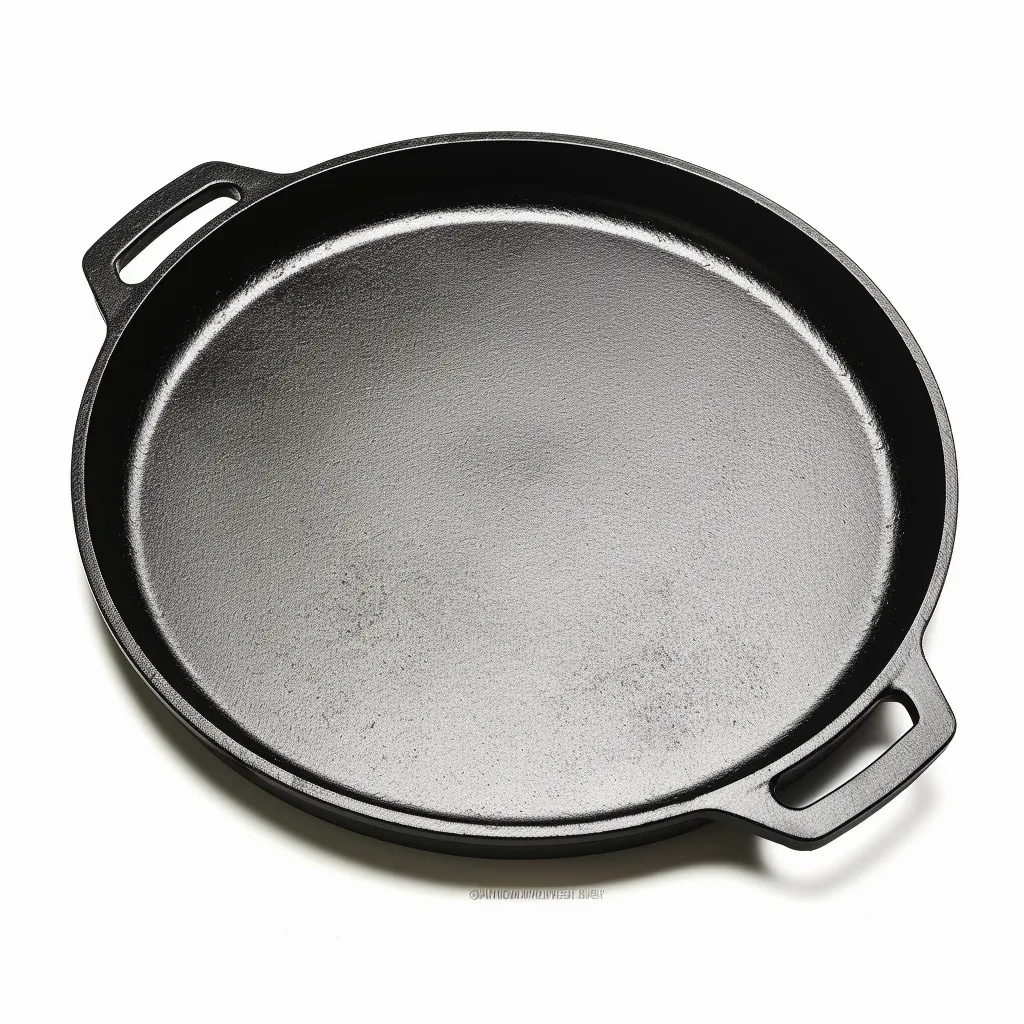
Cast Iron Pizza Pans are the sturdy, reliable tools in the world of kitchenware. These pans, which are made of heavy iron, are masters at holding heat, so your pizza will be cooked consistently and evenly. Most of these pans have a simple treatment called “seasoning.” This is just a fancy term for baking oil onto the pan until it forms a protective layer. This layer acts like a natural non-stick surface and also keeps the pan from rusting. Over time, with regular cooking and occasional re-seasoning, the pan gets even better and more non-stick.
| Pros | Cons |
|---|---|
| Holds heat very well, so cooks evenly | Heavy and can be a bit hard to handle |
| Can last forever with proper care | Needs occasional re-seasoning |
| Gets more non-stick the more you use it | Can rust if left wet |
| Great for deep dish and crispy crusts | Might be a bit much for thin-crust lovers |
If you’re looking for a long-term kitchen tools that will serve you countless perfect pizzas, a cast iron pan might just be your pick. Just remember to give it a bit of TLC (tender loving care) with seasoning and keep it dry!
Stainless Steel Pizza Pan

Stainless steel pizza pans are the kitchen’s shiny stars. They’re tough, long-lasting, and resistant to rusting. Plus, The surface is naturally smooth and doesn’t react with foods, they won’t make your food taste weird, like how some metals can with tomato sauce. They’re not really non-stick on their own, so some have a special design to help with that like the brushed or textured finish. But mostly, they’re simple and easy to use.
| Pros | Cons |
|---|---|
| Durable and long-lasting | Not naturally non-stick |
| Doesn’t react with acidic foods | Might need some oil or parchment paper |
| Easy to clean and dishwasher safe | Doesn’t hold heat as well as cast iron |
| Looks shiny and professional | Can have hot spots, so watch your pizza! |
If you’re after a pan that’s easy to care for and looks good for years, stainless steel might be your go-to. Just keep an eye on your pizza while it cooks, and maybe keep some parchment paper handy!
Ceramic Pizza Pans
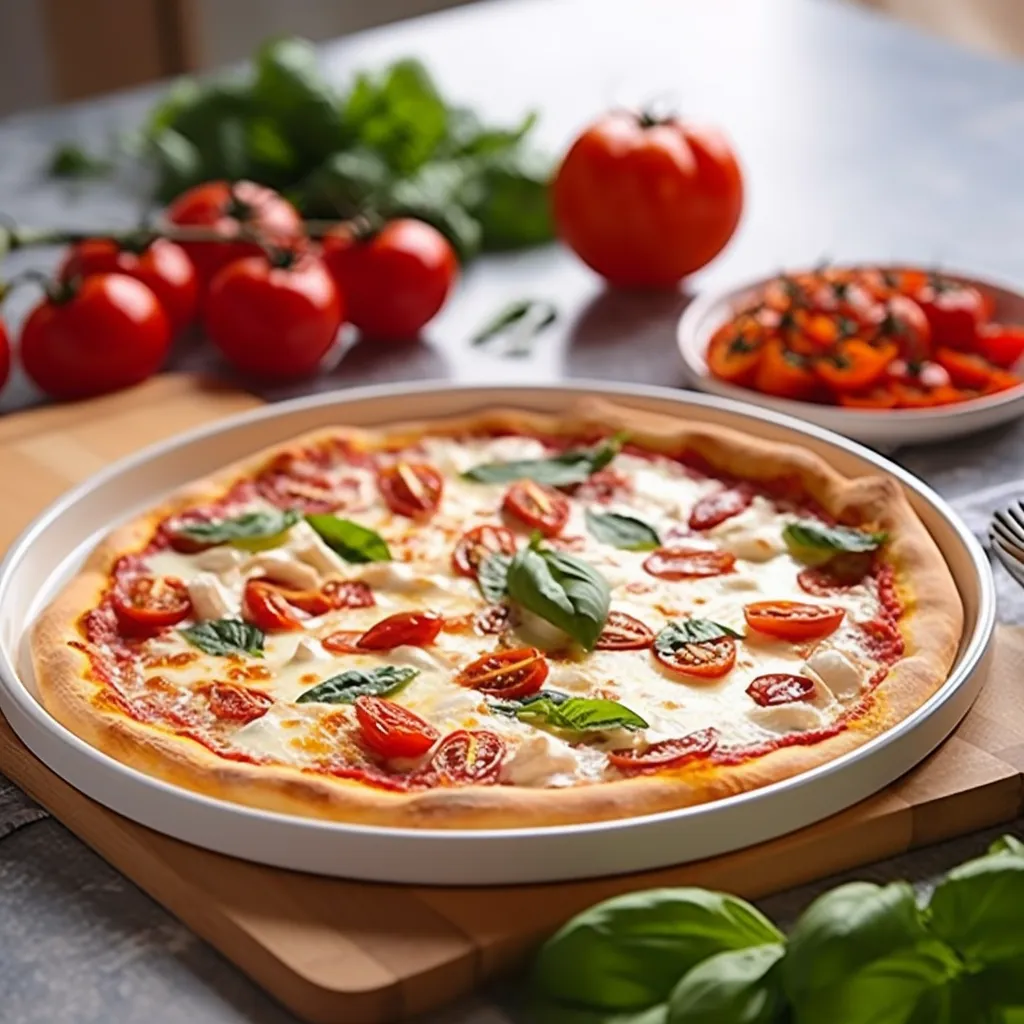
Ceramic Pizza Pans are crafted from clay and hardened by heat, resulting in a durable and naturally non-stick surface. Unglazed ceramic pans absorb moisture well but need seasoning for a non-stick surface. Glazed ceramic pans have a smooth glass coating that creates a non-stick surface without seasoning. Most ceramic pizza pans come with a glaze, which not only gives them a glossy appearance but also enhances their non-stick properties. This glazing also aids in making the pans more resistant to scratches and stains. Ceramic pans offer even heating, ensuring that the pizza cooks uniformly. They are also versatile and can often be used both in ovens and on grills. But they are heavy and prone to cracking.
| Pros | Cons |
|---|---|
| Naturally non-stick surface | Can crack or break if dropped |
| Even heat distribution for uniform cooking | May take longer to heat up than metal pans |
| Resistant to scratches and stains | Can be heavier than some other types |
| Doesn’t react with acidic foods | Requires careful handling to avoid chipping |
Stone Pizza Pans
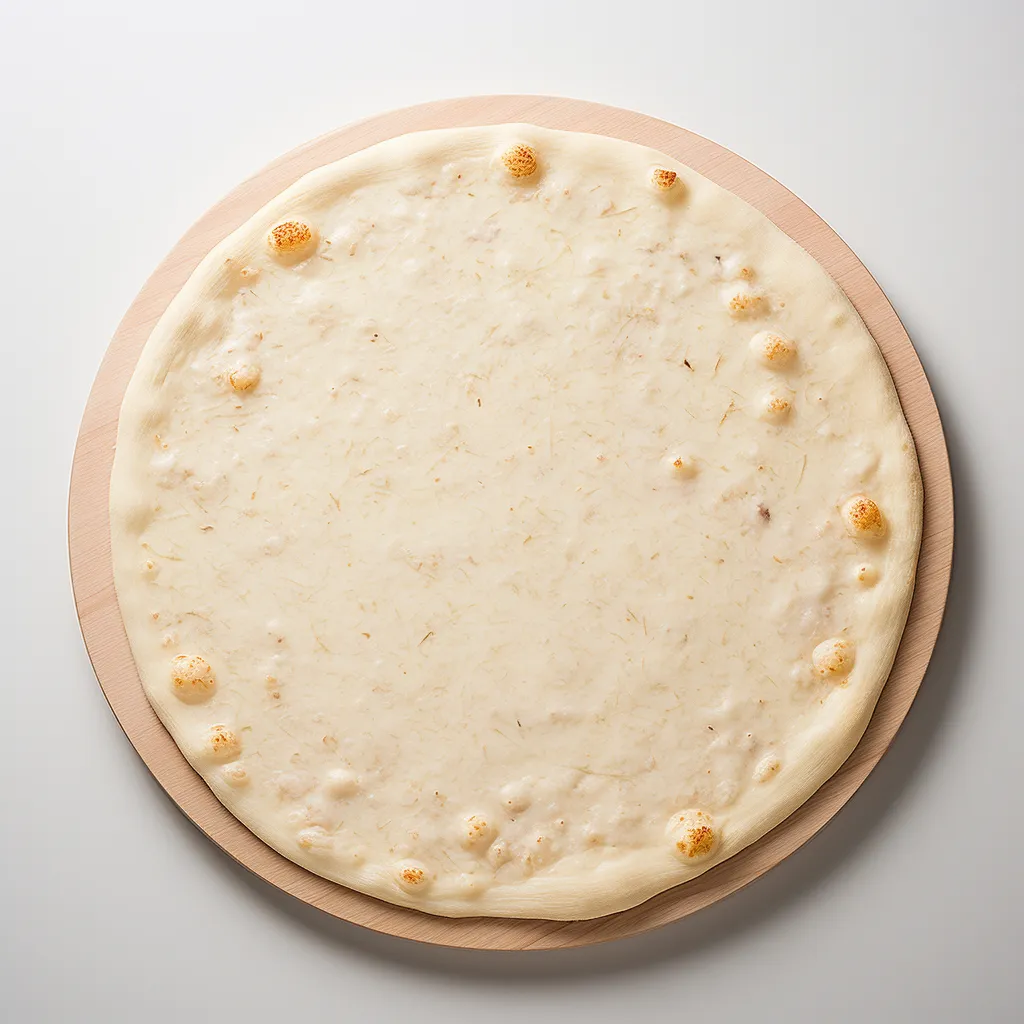
Stone Pizza Pans, often referred to as pizza stones, are made from natural stone materials such as cordierite or ceramic, which is durable, dense, and resistant to thermal shock. The porous surface of these pans, which mimics the conditions of a brick oven by absorbing moisture, produces a crispy pizza crust. Stone thickness affects heat retention – thicker stones hold more heat. They don’t usually have any additional surface treatments, as the stone itself provides the necessary cooking surface. Over time, pizza stones may develop a patina, or darkened area, which is simply a seasoning that enhances its non-stick qualities. One downside is stone’s weight and fragility if dropped.
| Pros | Cons |
|---|---|
| Provides an even and consistent heat | Can be fragile and prone to cracking if mishandled |
| Absorbs moisture for a crispy crust | Needs to be preheated for best results |
| Enhances flavor with repeated use | Not naturally non-stick |
| Easy to clean with just warm water | Can stain over time |
Why are the Depth and Edge Designs of Pizza Pans Matters?
Pizza Pan Edge Designs are very important in shaping the crust and overall appearance of the pizza.
Flat Edge: The entire surface of this design is flat. These pizza pans often produce crusts that are evenly thin from center to edge. It makes it simple to slide pizzas on and off, which makes it a popular among people who use pizza peels.
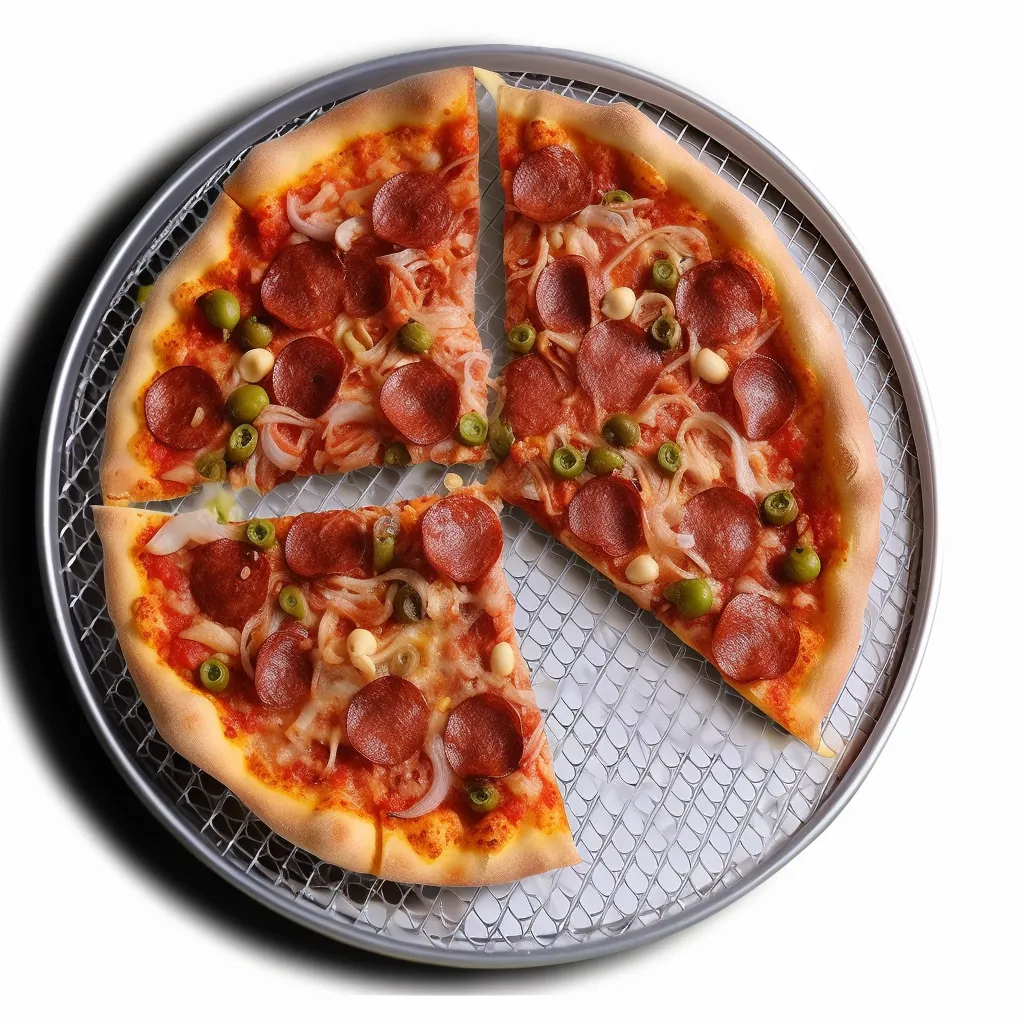
Raised Edge (or Rolled Edge): Pans with a slightly raised or rolled edge help to keep the pizza and its toppings in shape. This design is better for pizzas with more generous toppings or cheese because it helps prevent leaks throughout the baking process.

Nibbed or Dotted Edge: These pans’ edges have “nibs” or dots, which are little bumps. This design allows for more airflow beneath the pizza, resulting in a crisper crust.
Deep-Dish Edge: Deep-Dish Pans have tall, straight edges that are designed exclusively for cooking deep-dish or pan-style pizzas. They can hold a thicker crust as well as more toppings and cheese.
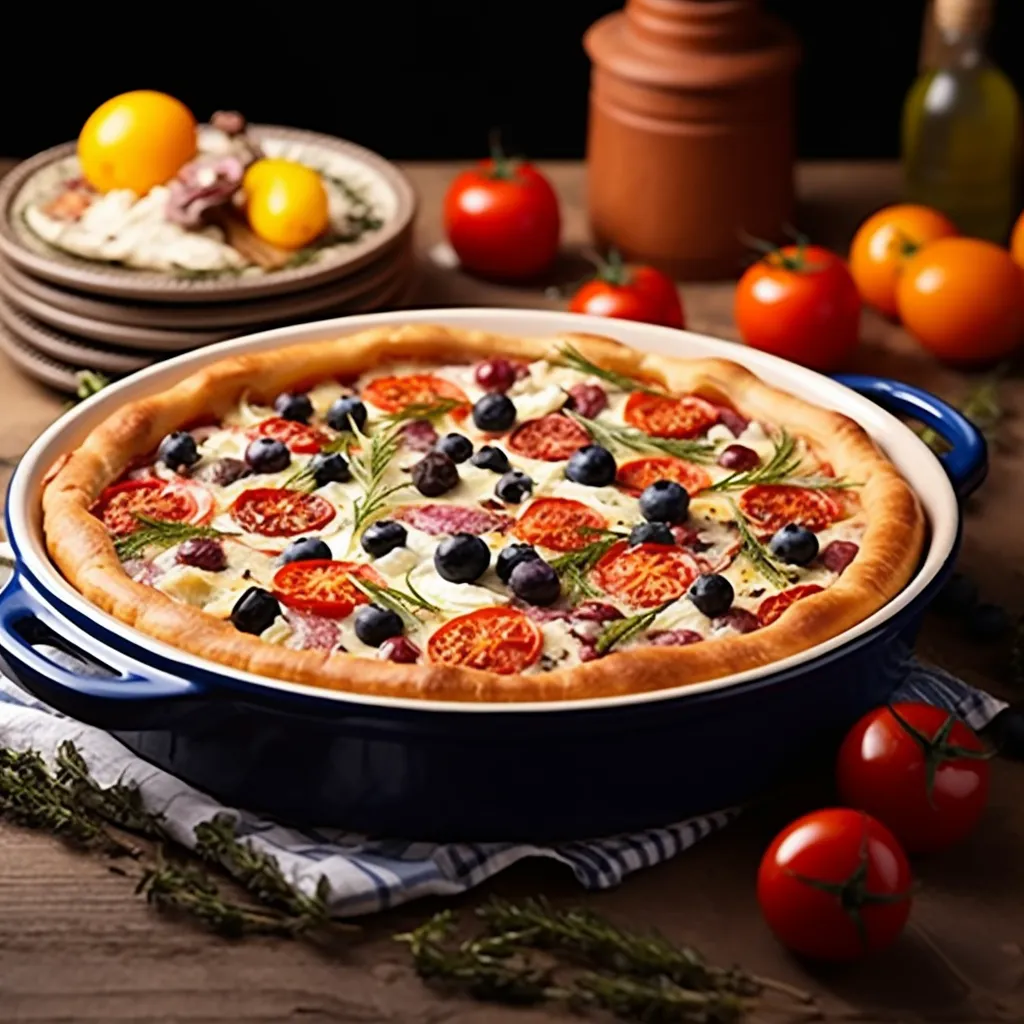
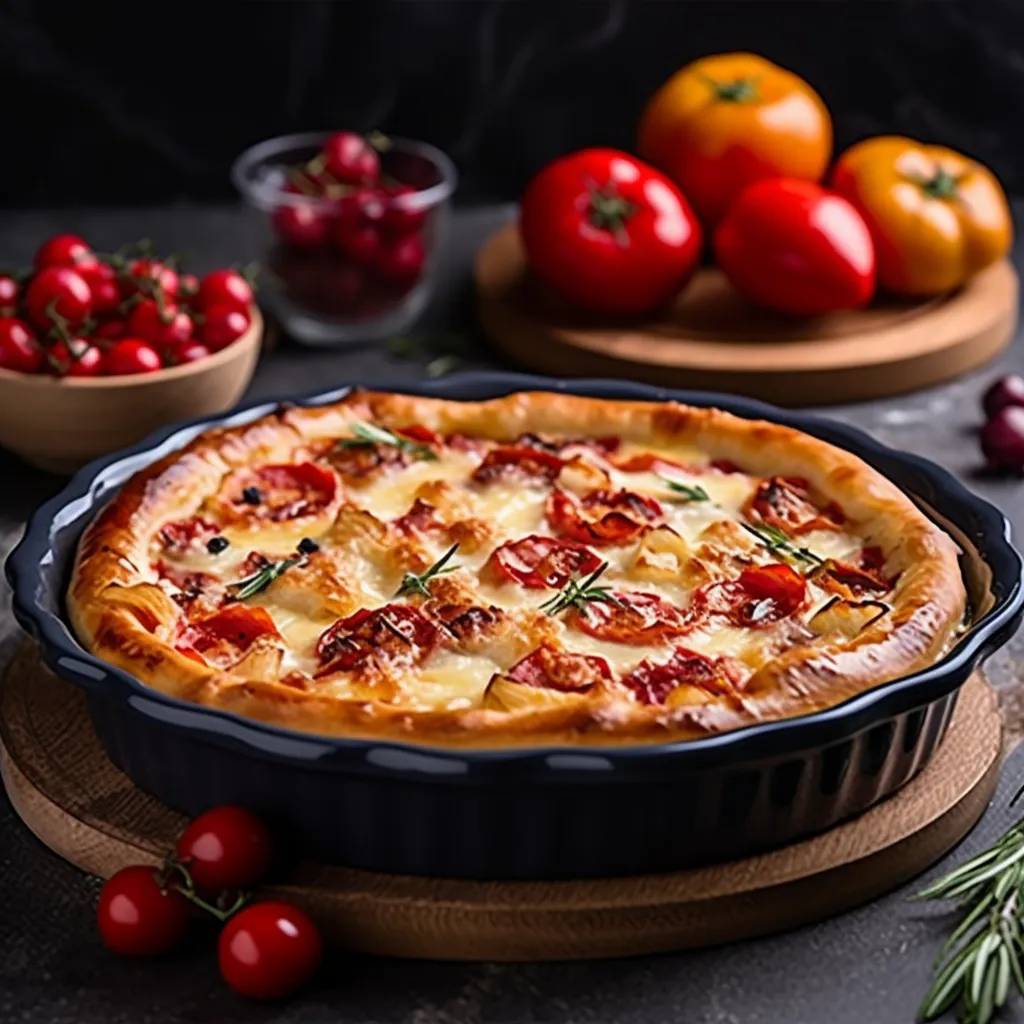
The thickness, texture, and shape of the crust are all directly influenced by the edge design. A flat edge is great for thin and uniform crusts, while a raised edge can hold in more toppings. Nibbed edges try to improve the crispiness of the crust, while deep-dish edges allow for a thicker, more substantial pizza slice. Choosing a pan based on the design of its edges may help to achieve the desired pizza style and outcome.
Thickness of the Pizza Pan and Its Influence
The thickness of a pizza pan affects how efficiently it conducts and retains heat, impacting the crust and baking.
Thinner pizza pans generally heat up more quickly but don’t retain heat as well over time. This can result in the bottom crust cooking faster while the top and edges lag behind. Thinner pans also cool down faster, making it difficult to bake multiple pizzas in a row. Too thin, and pans can also warp from high oven temperatures.
Thicker, heavier pans absorb more heat to bake the pizza more evenly. They crisp up the bottom layer nicely while ensuring the top cooks through. Thick metal or stone acts as a heat bank, staying hotter for consecutive pies, though they might take a bit longer to preheat..
For best results, look for pizza pans around 3/16 to 1/4 inches thick to combine quick heating with ample heat retention. The right thickness crisps the crust while baking top and bottom evenly.
How does the Surface Designs of Pizza Pans Impact?
Pizza Pan Surface Designs significantly influence the cooking process and the final texture of the pizza crust.
- Smooth surfaces: A smooth surfaces allow for full contact with the pizza dough which promotes even browning and uniform crust. It’s versatile and can handle a variety of pizza types. Smoother pans are also easier to clean.
- Perforated Surface: Perforated pans have small holes that let air flow underneath the crust, creating a crispier bottom layer. Perforated pans do not support the crust as fully.
- Corrugated and ridged Surface: These pans have shallow grooves that break up surface contact. The primary purpose is to minimize the contact area between the pan and the pizza, facilitating better heat circulation and resulting in a crust with a slightly textured bottom. The ridges can imprint patterns onto the bottom crust. However, corrugated and ridged pans can be hard to clean.
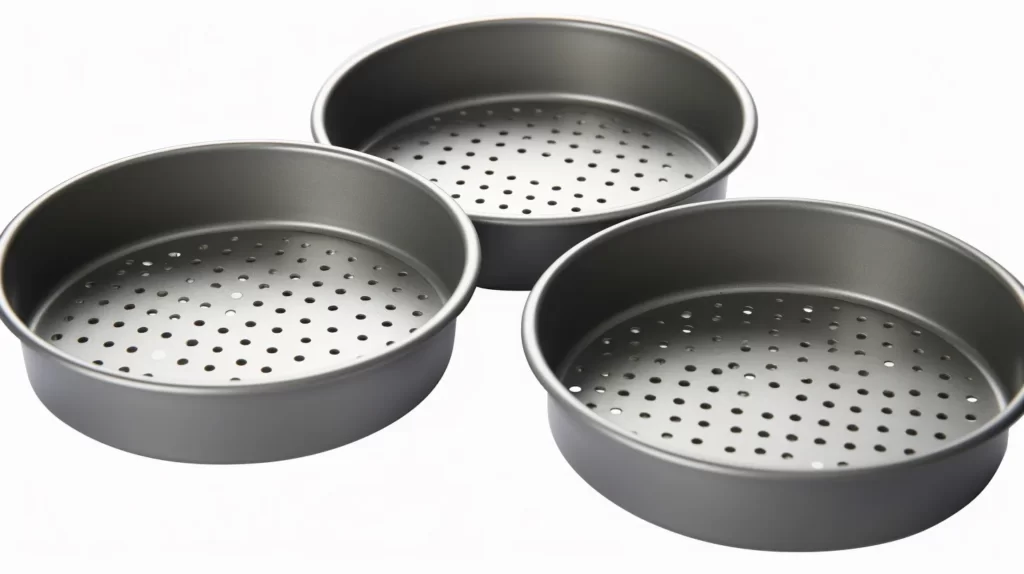
The perforations and ridges help prevent a soggy crust and create crispness through increased airflow. The optimal surface design depends on the texture you want for your pizza crust. Perforated or ridged pizza pan is recommended for a crisper, well-cooked bottom with speedness. Non-perforated pizza pans or smoother pans offer more stability and even browning, it may appeal to consumers who want a doughier foundation, and it’s the easiest to use and clean.
How to Choose the Right Pizza Pan Sizes?
Choosing the Correct Pizza Pan Size is critical for a delicious pizza experience. The size you choose should be determined mostly by the number of servings you want and the size of your oven.
- Small Pans (8-10 inches): Ideal for individual sized pizzas or for those who wish to customize their pizzas. A small pan is also a good choice for households with smaller ovens. The crust will be thicker and softer since the dough is more confined.
- Medium Pans (12-14 inches): These are the most common sizes, suitable for family dinners. A medium-sized pizza typically serves two to four people. Standard family-sized frozen pizzas are usually 12 inches, so a 12-14 inch pan will fit them perfectly. Also, For a thin, crisp crust, larger 14-16 inch pans are ideal as the dough can stretch out more.
- Large Pans (16-18 inches and above): Perfect for gatherings, parties, or larger families. Ensure your oven can accommodate this size before purchasing. For Sicilian-style square pan pizzas, around 16×16 inches gives plenty of space. As a guideline, allow at least 2 inches of pan space around the crust so it has room to rise. Extra-large 18+ inch pans can accommodate bigger crowds but require more dough and toppings.
The size of the pizza pan influences portion control and the number of servings. A pan that’s too small might not make enough for multiple servings, while a large pan might produce more than required or may not fit in the oven. Moreover, the pan size can also influence the baking time: smaller pizzas will generally cook faster than larger ones. The bigger the pan, the thinner and crisper the crust will be. Smaller pans create a thicker, chewier crust. Thus, choosing the right pizza pan size ensures you have the right amount of food and that it’s cooked perfectly.
Maintenance and Care of Pizza Pans
Pizza pan maintenance and care are essential for extending their lifespan and ensuring consistent cooking results. First and foremost, always follow the manufacturer’s directions, as different materials may require different maintenance.
In general, allow the pizza pan to cool to room temperature after each use. For most pans, a gentle hand wash with mild dish soap and warm water would adequate for most cookware. Harsh detergents can damage surfaces over time. Avoid scouring pads or steel wool, especially on nonstick or seasoned surfaces, as they can harm the pan.
For pans with a natural nonstick seasoning, such as cast iron or seasoned steel, it’s critical to dry them immediately after washing to prevent rust. Finally, store pizza pans in a dry place, avoid stacking, making sure they’re completely dry to avoid any potential rust or damage.
For iron or steel pans, lightly oiling on a regular basis will also maintain their nonstick properties. For enameled pans, inspect regularly for chips and avoid metal utensils. Stones and glazed ceramics should be checked for cracks or damage with gentle handling. With regular washing, drying, oiling, and gentle use, pizza pans will last for many years of cooking mouthwatering homemade pizzas.CopyRetry
Extension Reading of the Origins of Pizza
The Birthplace of Pizza
The origins of pizza can be traced back to ancient times, but pizza as we know it today trace back to Italy. Specifically, Naples is considered the birthplace of modern pizza, with the first pizzerias opening there in the late 18th and early 19th centuries. Naples’ proximity to Mount Vesuvius provided fertile volcanic soil ideal for growing flavorful tomatoes and herbs that would top the pizzas. The warmer climate and hotter ovens of the region lent itself to baking these open-faced pies. Street vendors in Naples sold pizza from carts before savvy entrepreneurs opened the first pizza bakeries and restaurants. The tradition of kneading dough and topping it with fresh tomato sauce, mozzarella cheese, basil, and other ingredients originated with Neapolitan pizza. This style, with its soft, chewy crust baked quickly at high heat, set the standard that most pizzas around the world are based on today. These pizzas, traditionally prepared on flat stones inside big wood-fired ovens, had an unique flavor that delighted the hearts of many. Pizza has since evolved into numerous regional variations, but Naples remains the historic home of the most iconic and influential pizza we know and love.
Evolution of Pizza Baking Tools
As pizza got increasingly popular, the demand for more specialized tools grew. The tools used to make pizza have evolved over the centuries as technology and methods have advanced. In ancient times, flatbreads were baked on hot stones or cooked over an open fire using a long wooden peel. Later on, wrought iron plates and shallow pans were developed to bake pizza in wood-fired brick ovens. With the invention of the modern pizza oven in the late 1800s, thicker metal pans could be used to withstand the higher heat. Rotating pizza ovens allowed for more consistent baking. Kitchen supply companies eventually created affordable pizza stones, peels, and pans for home bakers. Today, innovations like stainless steel pizza discs and screens provide even more ways to quickly bake artisanal pizzas with crispy, flavorful crusts. Digital scales, dough docker rollers, and other modern gadgets also help streamline processes. While the wood-fired masonry oven remains the gold standard, passionate home pizza makers now have access to a wide array of tools for mimicking the perfect pizza parlor results right from their own kitchen.
FAQs
What’s the difference between a pizza stone and a pizza pan?
A pizza stone is typically made of ceramic or clay and mimics traditional wood-fired ovens, offering a unique taste. In contrast, pizza pans are metal dishes specifically designed for baking pizzas.
Why is even heat distribution crucial for pizzas?
Uneven heat distribution can lead to inconsistent baking, resulting in a pizza that’s crispy in some areas and undercooked in others.
How often should I clean my pizza pan?
Ideally, after each use. However, certain materials, like cast iron, might require less frequent cleaning.
Is a non-stick pizza pan better?
It depends on personal preference. While non-stick pans are easier to clean, they might not deliver the same crispy crust as their traditional counterparts.
Do I need to season my pizza pan?
Only if it’s made of cast iron. Seasoning helps create a natural non-stick layer and prevents rust.
How do pan perforations impact the crust?
Perforations allow moisture to escape, leading to a crispier crust
Bonray‘s Expertise in Metal Houseware
With over 200 dedicated employees and a rich legacy in the metal houseware industry, Bonray has become synonymous with quality and innovation. Our extensive product line, coupled with our unparalleled R&D capabilities, positions us as industry leaders. We understand the nuances of metalwork, and our perforated pizza pans are a testament to our commitment to excellence.
At Bonray, we pride ourselves on our diverse product range. Our pizza pans, both perforated and non-perforated, crafted with precision and expertise, are a favorite among many. We cater to a wide clientele, from wholesalers to brand owners, ensuring that our products resonate with quality and reliability.
In the quest for the perfect pizza, the right pan can make all the difference. As the culinary world continues to evolve, Bonray remains committed to delivering excellence, one pizza pan at a time. Explore our offerings and elevate your pizza game to new heights.


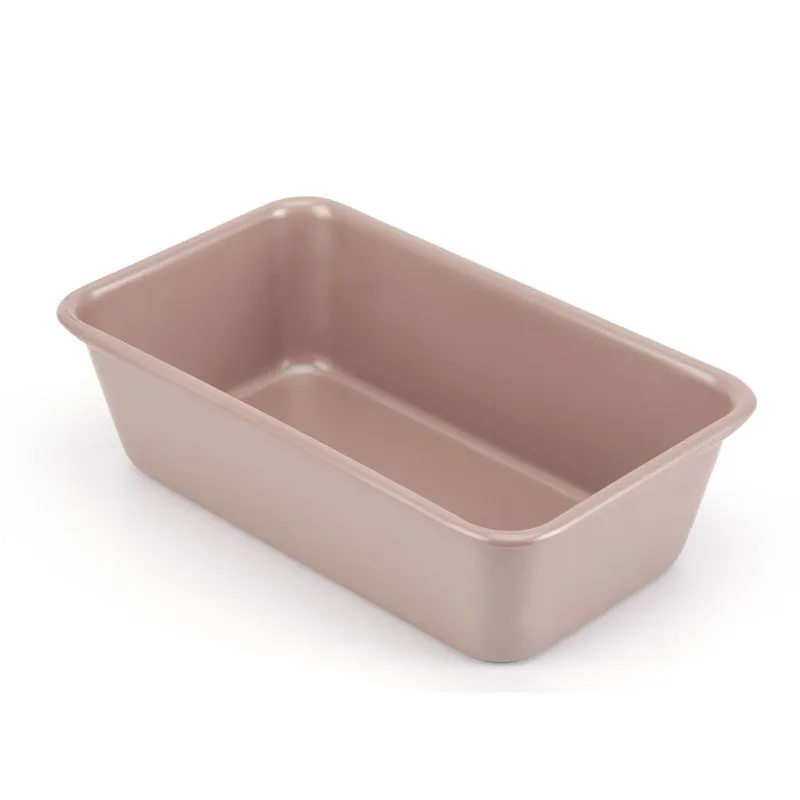
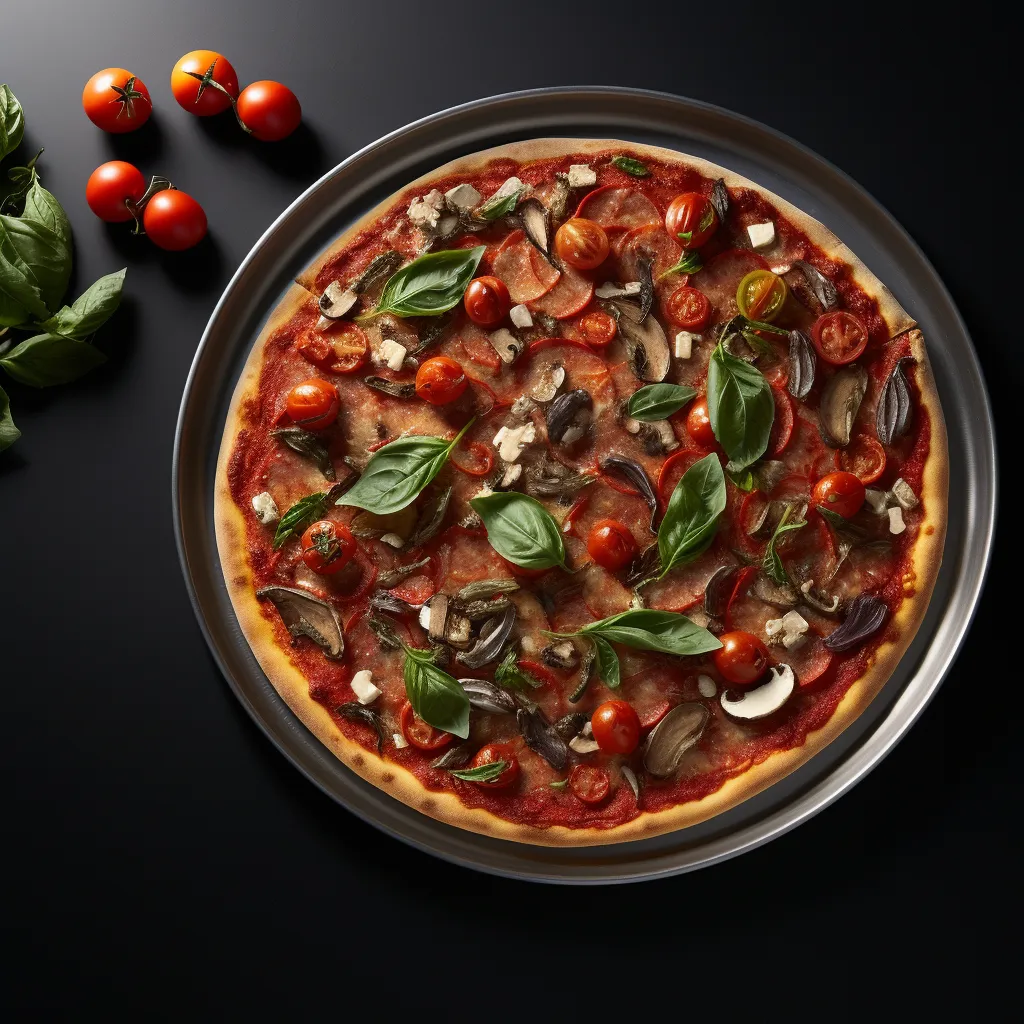
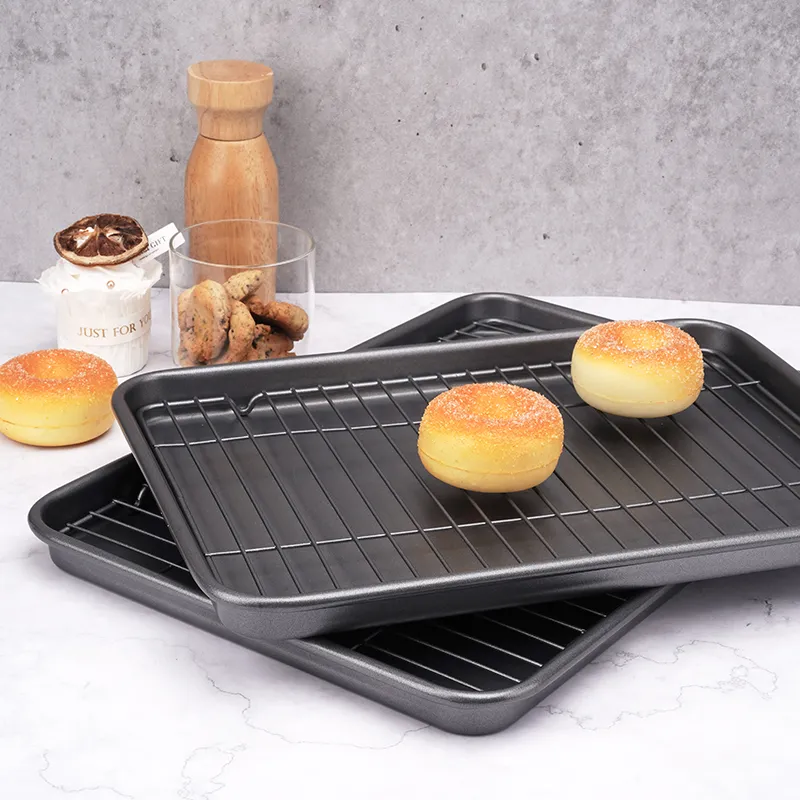
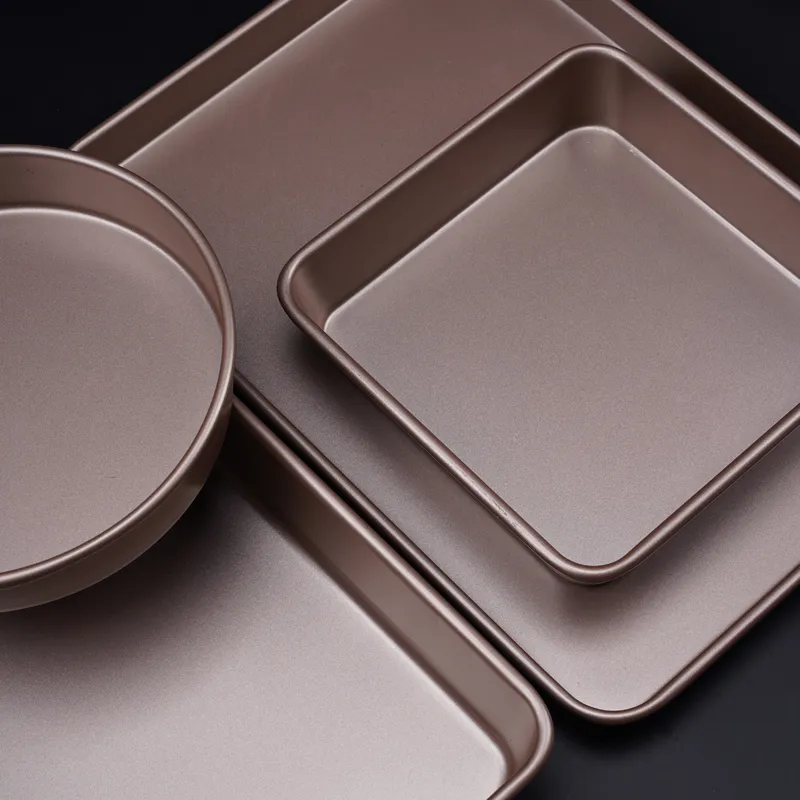

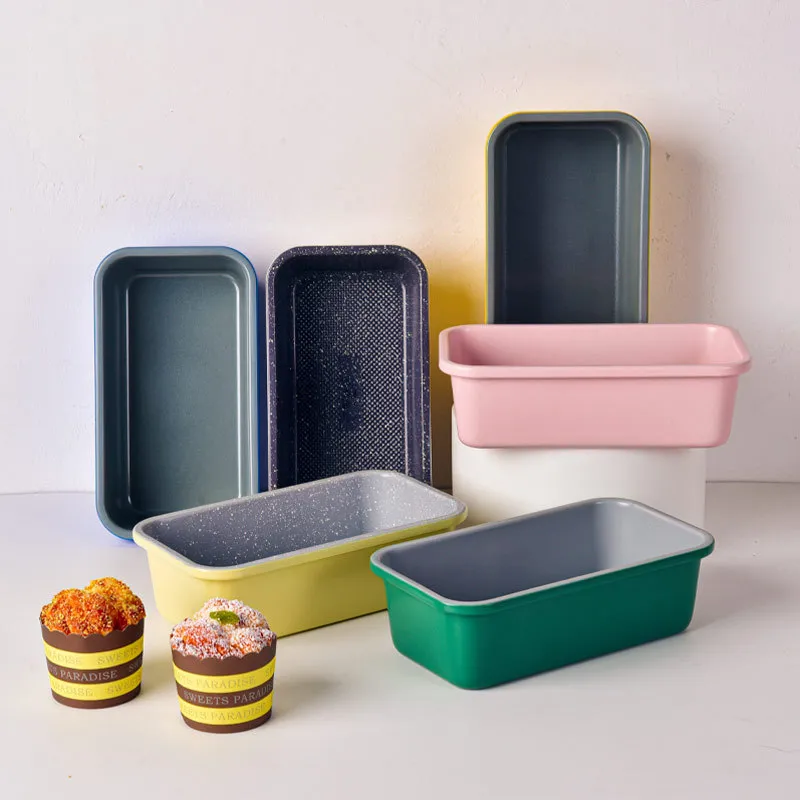

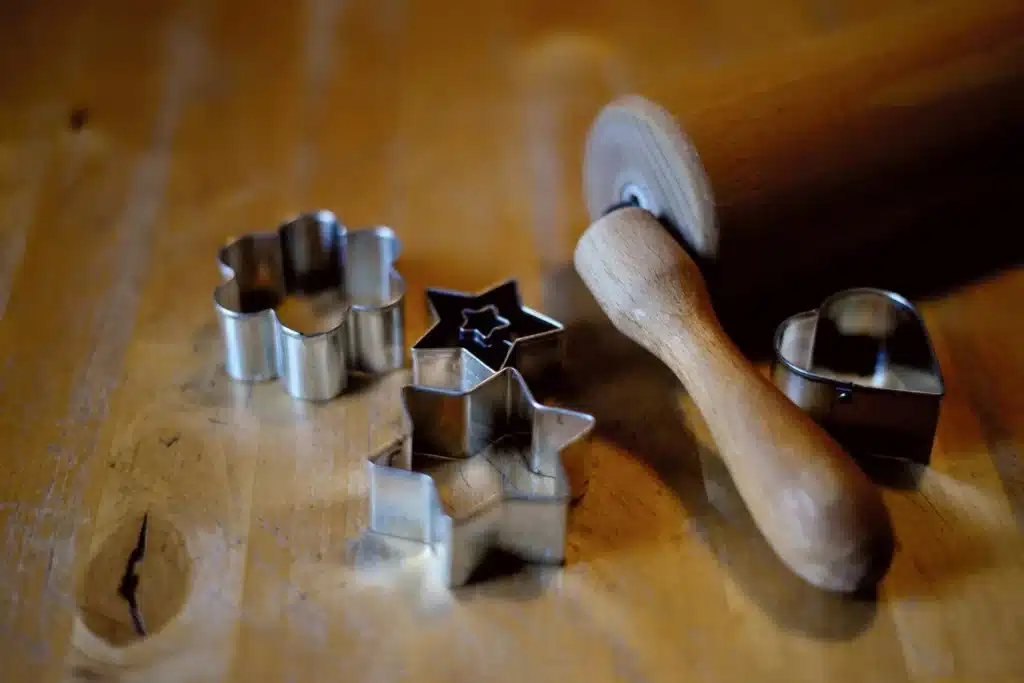
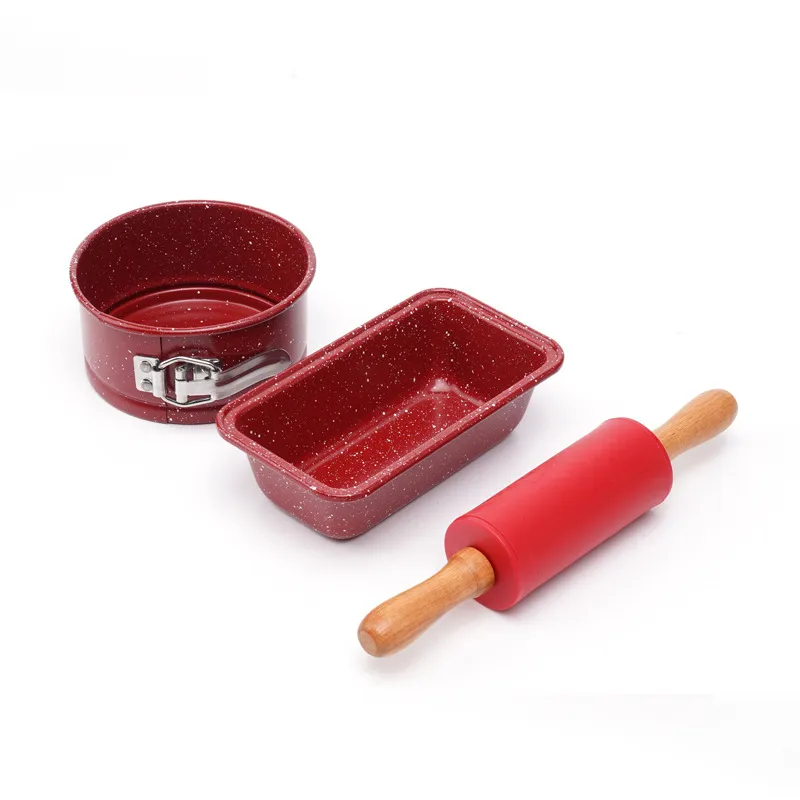

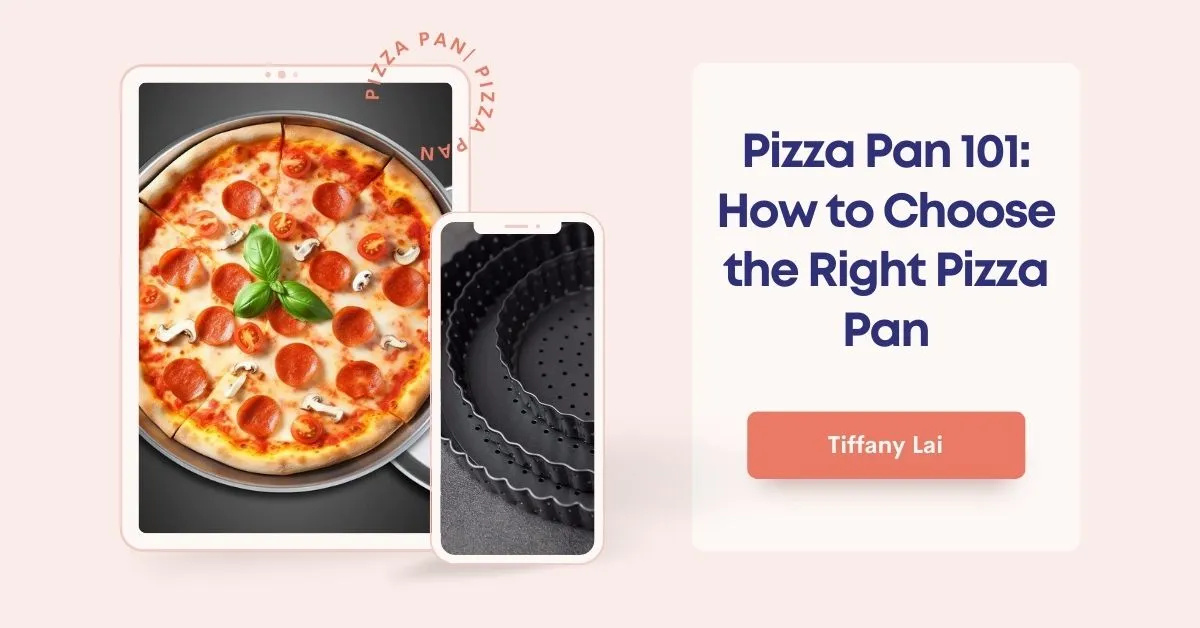






One Response
Can you be more specific about the content of your article? After reading it, I still have some doubts. Hope you can help me.